
Correggio, “Danae”, 1531
“When an individual becomes over-involved in a topic of conversation, others are drawn from the talk to the talker. One man’s eagerness is another man’s alienation. Readiness to become over-involved is a form of tyranny practiced by children, prima donnas and lords, placing feelings above moral rules that should have made society safe for interaction.”
Erving Goffman
“If Freud was ‘conservative’ in his immediate disregard of society, his concepts are radical in their pursuit of society where it allegedly does not exist: in the privacy of the individual. Freud undid the primal bourgeois distinction between private and public, the individual and society; he unearthed the objective roots of the private subject — its social content. Freud exposed the lie that the subject was inviolate; he showed that every point it was violated.”
Russell Jacoby
“There is no doubt that we are living in an epoch of nightmare aesthetic, from which oracles occasionally emerge. An example of this image-nightmare -reality to my blinded eyes; Arnold Schwarzenegger becoming Governor of California.”
Bernard Stiegler
“I am not even saying ‘politics is the unconscious’—but, quite simply, the unconscious is politics!”
Jacques Lacan
Seminar XIV, 1967
I am finding, increasingly, that a certain madness has taken over Western societies. I think some psychological tipping point has been reached in the last two years. That sounds funny, but it certainly feels that way. I see it in the UK, I saw it in France, in Poland, in Scandanavia (less though) and certainly in the U.S. And it feels more and more as if one is always interacting with narcissism. But it is expressed in a sort of erasing of discussion. Its a personal attack, regardless of the situation or topic. It is a rigid alignment with a position and an insistence on *being right*. On winning the argument. But it goes beyond that, even. Its winning where there is no argument. Its a sort of rhetorical carpet bombing. Just aim the flamethrower and roast all in your path. Historically, I think, these tendencies have been the province of the right wing nutter parties, if we’re speaking of the U.S. The John Birch Society, or the American Nazi Party. Today, it is increasingly a part of the repertoire of the left, too. It seems, in fact, the activity of nearly everyone. I have written about irony and snark (and I notice more than few others on these topics of late, and for that matter quite a few over the last few years) but this is now something else, and its not just the University educated white male who is snarky. It is now, nearly, everyone.
I believe this is a kind of psychological malady, a deformation or psychic disfigurement that is simply the effect of something that has happened at an almost primal level, an effect, too, of electronic media, and it has corrupted everyone at an almost molecular level. And its fed by and a creation of social media. It is now well past time to see the pathologies of social media. Of social interaction framed by avatars on the screen of your lap tap. And it is the accumulative affects of life in a system designed to feed extreme wealth.
Lacan saw a connection between knowledge and paranoia.
“The relation between knowledge and paranoia is a fundamental one, and perhaps no where do we see this dynamic so poignantly realized than in childhood. From the ‘psychotic-like’ universe of the newborn infant (e.g. see Klein, 1946), to the relational deficiencies and selfobject failures that impede the process of human attachment, to the primal scene and/or subsequent anxieties that characterize the Oedipal period, leading to the inherent rivalry, competition, and overt aggression of even our most sublimated object relations, — fear, trepidation, and dread hover over the very process of knowing itself. What is paranoid is that which stands in relation to opposition, hence that which is alien to the self.”
Jon Mills

Gisela Erlacher, photography.
The recent rat box experiments by Bruce Alexander, in relation to addiction, are worth mentioning here. A digression:
“In the 1960s, some experimental psychologists began to think that the Skinner Box was a good place to study drug addiction. They perfected techniques that allowed the rats to inject small doses of a drug into themselves by pressing the lever. This required tethering the rat to the ceiling of the box with tubing and surgically implanting a needle, or catheter, into their jugular veins. The drug passed through the tube and the needle into the rats’ bloodstreams almost instantaneously when they pushed the lever. It reached their brains moments later.
Under appropriate conditions, rats would press the lever often enough to consume large amounts of heroin, morphine, amphetamine, cocaine, and other drugs in this situation. The mass media of the day were quite excited about these experiments. The results seemed to prove that these drugs were irresistibly addicting, even to rodents, and by extension, to human beings. The conclusion that illegal drugs are irresistibly addicting fit well with the fearsome images that were being propagated about them. The rat research provided additional support for the War on Drugs of that day.”
Alexander continues…
“First, the ancestors of laboratory rats in nature are highly social, sexual, and industrious creatures. Putting such a creature in solitary confinement would be the equivalent of doing the same thing to a human being. Solitary confinement drives people crazy; if prisoners in solitary have the chance to take mind-numbing drugs, they do. Might isolated rats not need to numb their minds in solitary confinement for the same reason that people do? Second, taking drugs in a Skinner box where almost no effort is required and there is nothing else to do is nothing like human addiction which always involves making choices between many possible alternatives. Third, rats are rats. How can we possibly reach conclusions about complex, perhaps spiritual experiences like human addiction and recovery by studying rats? Aren’t we more complex and soulful than rats, even if we have similar social needs?”
The result of Alexander’s experiments was that rats in social situations, not in isolation, but in friendly natural rat societies, stopped taking the morphine. He draws the parallel to colonial isolation of various indigenous people, that gave rise to bromides like ‘Indians cant handle liquor” etc.

Ann Hamilton
Alexander again:
“Certain parallels between the problems of colonized human beings and the rats in Rat Park appear to provide an explanation. In both cases there is little drug consumption in the natural environment and a lot when the people or animals are placed in an environment that produces social and cultural isolation. In the case of rats, social and cultural isolation is produced by confining the rats in individual cages. In the case of native people, the social and cultural isolation is produced by destroying the foundations of their cultural life: taking away almost all of their traditional land, breaking up families, preventing children from learning their own language, prohibiting their most basic religious ceremonies (potlatches and spirit dancing in Western Canada), discrediting traditional medical practices, and so forth. Under such conditions, both rats and people consume too much of whatever drug that is made easily accessible to them. Morphine for the rats, alcohol for the people.
In both cases, the colonizers or the experimenters who provide the drug explain the drug consumption in the isolated environment by saying that the drug is irresistible to the people or the rats. But in both cases, the drug only becomes irresistible when the opportunity for normal social existence is destroyed.”
So, it’s not unreasonable to see a culture ever more isolated, more detached from traditional social interactions with their community, be in such pain that various self destructive behaviors will become habitual. Now, to return to Lacan and knowledge and paranoia; and how this relates, perhaps, to a growing sense of aggression in the West. The mirror phase posits the idea that the infant’s first organizational process involves the gaze of the other. The reflection of itself. This image sets the boundaries for ego and body differentiation. But it is a fiction, a mis-reading. But forever this shadows the development of the *I*. The ego is always trapped in a dynamic with the ‘other’, in a dynamic of being recognized. And here the idea of theatre is unavoidable. Lacan used, in various places, the term ‘staging’. What is important, though, is that the audience in theatre is able to experience something of its own dislocation in that peculiar space created by actors and acting. The actor is not representing acts, not completely, but rather (per Samuel Weber) actualizing a performance — which ideally is a form of revealing something, in the present. There is a lot of doubling of effects in theatre. An actor like Brando, as an example, is always both the character he portrays, and himself, and something inexplicable and destablizing. This is something, this strange exposing of self, that Artaud wrote about obsessively. Here is where Lacan advanced Freud’s notion of dreamwork, and suggested the third part of the dreamwork being translated as ‘considerations of staging’, rather than considerations of representability. Lacan saw that all representations were predicated upon a spectator.

Luca Campigotto, photography.
There are other registers at work in all this. The Society of the Spectacle, per Debord, intuited the right metaphor, if that is what it was. The dreamwork is also, always, concealing what it is doing. It is hiding that it is hiding. This is complex, however, for the dream is also dissimulating its concealing, its distortions. The theatre is so powerful, when it works, because it is reproducing a primal construction of the psyche.
“Through the imaginary, the ego is no more than a return of an image to itself. The paradoxical structure of the imaginary is therefore the polarity between alienation and recognition. Lacan sees recognition as the recovery of the alienated image facilitated through the mirroring of the other. As the subject finds or recognizes itself through an image (insofar as recognition is the misrecognition of its autonomous ego as an illusory mastery), it is concurrently confronted with its own alienated and alienating image; hence this process becomes an aggressive relation.”
Jon Mills
The society of domination and control, under which the populace of the West exists, is one of colonial logic. And it is one that disguises its activities in multiple ways. Wendy Brown suggests how *illegible* much political activity has become. The dismantling of centuries of labor law and protections, benefits, and with it (per Brown) the foundation and origin and meaning of these laws and practices. As Reagan destroyed the last of real union power in the U.S., a mere thirty some years ago, today most teenagers have scant idea of labor history in the North America. Ask those teenagers what is in their self interest, and most will be confused even by the question.

Titian, or from workshop of Titian. Apprx. 1520.
“I may add that when a few days under nine months old he associated his own name with his image in the looking-glass, and when called by name would turn towards the glass even when at some distance from it.”
Charles Darwin
On watching his 8 month old son (A Biographical Sketch of an Infant, 1877)

Michael Chelbin, photography.
There are a wealth of antecedents to Lacan’s mirror phase theory. Many from the later half of the 19th century. In most of them, observations were coupled to ideas of mimicry. So here is an alternative branch of this idea of mimesis, that Adorno wrote so much about. Our relationship to images, at least in Western society since the Industrial Revolution, is one of anxiety, rivalry, and tension. As well as paranoia. The experience of art, then, has a primordial basis that connects to our psychic formation and development. And however one trusts or distrusts both Freud and Lacan, I think it is fairly obvious that mimicry begins in children at a very early place before language. And it worth a final note, here, that we aren’t really speaking of a literal mirror. I mean it *can* be a literal mirror, but it is the sense of mirroring, mimicry, that matters far more.
So, then, the experience of aggression I continue to see in cyber road rage flame wars, which feel almost constant now, is partly the reaction to the validating of fear and distrust at an early age. A reinforcing of natural tendencies of the maturing process. It is also a spasm of terror at perhaps being wrong, being questioned really, because *wrong* is not exactly in everyone’s vocabulary. This is not the same thing are asking for a new age Pollyanna version of passivity. I don’t actually think humans can much avoid a certain degree of aggression, and I think a certain degree is probably even healthy. No, this is the rage, the vengeful irrational over-importance of dealing with disembodied names in cyber space. How is it possible so many people invest so much emotional energy into abstract relationships with avatars? I found myself arguing with someone using a pseudonym of a food — I don’t know this person, never met him, and not likely to ever meet him (or her). I literally don’t have any idea who it is or where they live or how old they are, etc. And they refuse to identify themselves because of security reasons. Besides the fact that is a fantasy — literally a fantasy — it is typical and hardly an isolated incident. Even with people one knows, discussions are invariably hostile, sarcastic, aggressive in the extreme, bullying, stigmatizing, shaming, insulting, and ridiculing. This is contemporary society.

Charles Harbutt, photography.
Now, disagreement and debate, if that were possible in cyber space, would be a terrific thing, and there is a huge educational and political aspect to imparting and sharing information, describing events in real time often, commentaries on world politics is vital and in an another universe this might be how humans actually create public democratic forums. That does not happen, however. Usually only invective and scorn is being consumed….with at most a few hundred, or perhaps in extreme cases, a few thousand other social media users. Each platform encourages its own anger issues.
But there are broader considerations at work: from Stephen Marche’s article in The Atlantic, now sort of famous, Is Facebook Making Us Lonely. …“In the face of this social disintegration, we have essentially hired an army of replacement confidants, an entire class of professional carers. As Ronald Dworkin pointed out in a 2010 paper for the Hoover Institution, in the late ’40s, the United States was home to 2,500 clinical psychologists, 30,000 social workers, and fewer than 500 marriage and family therapists. As of 2010, the country had 77,000 clinical psychologists, 192,000 clinical social workers, 400,000 nonclinical social workers, 50,000 marriage and family therapists, 105,000 mental-health counselors, 220,000 substance-abuse counselors, 17,000 nurse psychotherapists, and 30,000 life coaches. The majority of patients in therapy do not warrant a psychiatric diagnosis. This raft of psychic servants is helping us through what used to be called regular problems. We have outsourced the work of everyday caring.”
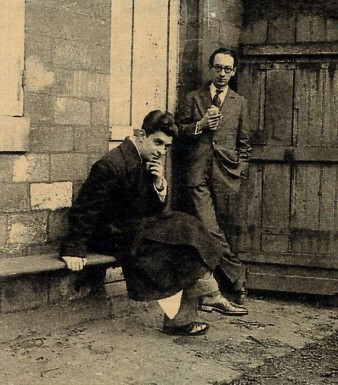
Jacques Lacan, & Henri Ey à Sainte-Anne.
Nadkarni and Hoffman wrote, in a study from 2012 believe there are two reasons people use social media; the need to belong and the need for self presentation. The self presentation idea is the product of decades of marketing, and really isn’t all that different from Erving Goffman’s Presentation of Self in Everyday Life (1959). And Goffman was positing that people create self stagings, in a sense, whenever they interact with people. Especially strangers. Now in Goffman’s later book, Asylums, (in which he popularized, if not invented, the term *institutionalization*)he saw that one of the purposes for maintaining control in institutional settings was the creation of the docile, bland, harmless and non threatening and inconspicuous subject. In reflecting on these things in light of Lacan’s revision of Freud, I think it’s possible to see the primal role of that mental censor so active in dreamwork, and also why both theatre and narrative exert such a profound influence on humans, and why the state, the authority structure, feels compelled to control both. Now Goffman also wrote about how people conceal themselves in the rituals of daily interaction. The avoidance of stigma. In social media today, concealment is a given. There are no rituals connected to the body or face. The loss of *face* would, then, seem the singular lack of cyber sociability. In social media, the engineering of an identity is the primary activity. Imparting information is second.
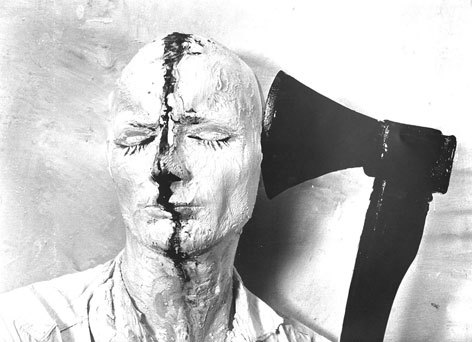
Gunther Brus
“In 2013, Rosen et al. studied the Facebook usage of 1,143 college-age students. The researchers found that major depressive
disorder, dysthymia, bipolar-mania, narcissism, antisocial personality disorder, and compulsive behavior were predicted by one or more Facebook usage variables (general use, number of
friends, use for image management).”
Amelia C. Strickland
Now Strickland also quotes various studies that indicate more use of social media exacerbates narcissistic tendencies and delusions of grandeur. There is no ‘place’ in social media, no face, and no body.
Strickland again…
“Also, younger generations were scored as consistently more anxious than older generations when they were unable to check their social networks and texts. A new medical term has been created out of this constant connectivity: Phantom vibration syndrome, defined as perceived vibration from a cell phone that is not vibrating, has been reported to occur with large numbers of people (Drouin et al., 2012; Rothberg et al., 2010).Phantom vibration syndrome may reflect a manifestation of the anxiety that cell phones elicit inthose who are obsessed with checking in on their social media and messages.”
Social media provides the illusion of activism, of belonging, and of friendship, but with none of the obligations. Anonymity is itself a kind of post modern ritual, now. But this connects, too, to what Bruce Fink, in writing of Lacan, called the ‘desire not to know’. The familiarity of neurotic symptoms provide a certain level of comfort. I’d argue that Western societies today, especially the U.S., are invested in reinforcing the idea that it’s perfectly OK, and in fact is a sign of independence and strength, to not investigate oneself too deeply. For all the self-help ideology out there, the truth is that even those seeking self-help don’t really want to know the truth. They want to feel better about not knowing. Now in social media there are additional layers of self presentation. Firstly, the limits of a twitter format are obvious, and in a different sense, on facebook — but cutting across all of this is a society of mass surveillance. The erasure of privacy seems a topic most people simply don’t want to think about. The best example is the use of avatars and pseudonyms…for self protection, even though, obviously, finding out the identity of someone isn’t really all that hard. Certainly the government knows who you are.

Hiroshi Senju
I am remminded of a quote of Adorno, in his informal conversations with Horkheimer in 1956.
“Philosophy exists in order to redeem what you see in the look of an animal. If you feel that an idea is supposed to serve a practical purpose, it slithers into the dialectic. If, on the other hand, your thought succeeds in doing the thing justice, then you cannot really assert the opposite. The mark of authenticity of a thought is that it negates the immediate presence of one’s own interests. True thought is thought that has no wish to insist on being right.”
a little later Horkheimer responds…
“On the case of students you often miss the feeling that they are speaking on their own behalf.” and “The USA is a country of argument”.
to which Adorno adds… “Argument is consistently bourgeois.”
The rise of narcissism, in mainstream media and from the reactionary pundit and talking head club, is usually associated with and blamed on the permissiveness of the sixties. But this isn’t really true at all. Firstly, the counter culture movement (and its a terrible reductive label) was one that foundationally was still linked to and part of the idea of ‘high culture’. By which I mean education that based on difficult subjects, classics, history, and the demand of learning the appreciation of such things. The notion of ‘freedom’, as Rob Weatherill points out, was both Neo Reichian and associated with struggles for independence in the third world. The sixties were Utopian and optimistic, and while in one sense the radical re-thinking on parenting and freedom was in opposition to tradition, there remained a deep respect for that tradition. The counter culture was, in most respects, intensely serious. The changes that occurred over the next twenty years, especially during the Reagan years, was the result of both marketing and capital consolidation, but also the valorizing of a market based behavior and set of values. The commodity culture, where the consumer was defined by what he or she purchased. The post modern, as I’ve pointed out before, was perfectly in tune with this, and served as both cause and effect, with a focus on surface and de-historicized notion of meaning.
“So when one talks of permissiveness now, one is talking about a way of life that is adjusted to a free-market economy and therefore is essential for survival…a sell by date is imposed on all meanings and values.”
Rob Weatherill
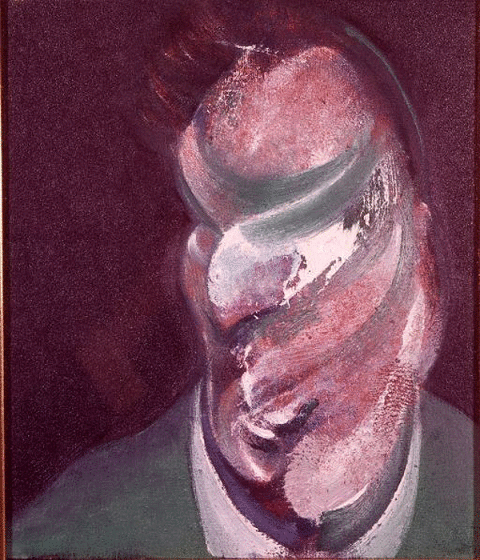
Francis Bacon
The paternal super ego is gone. Children no longer really internalize parental authority. Today, institutional authority subsumes all else, and institutions are organs of the ruling class. The problem, in a sense, was that Freud was right in terms of how the super-ego functioned. The denial of internal conflict (and the suggestion that it ALL came from outside) was wrong. Now strict Freudians are also wrong when they forget the influences of the outside world. But the fact remains, that in cultures in which community plays a large role, the proximity to many adults in the child’s life helps to regulate the often irrational impulses of the only half formed psyche of the child. The shift to marketing and commodity culture created the narcissism one sees today. It has little or nothing to do with permissiveness. But that narrative has traction because it aligns perfectly with a Puritan value system of sexual repression. The early super-ego is primitive and harsh. The child’s terrors of being eaten or cut in pieces by monsters is mediated by parental authority and stability. But as Weatherill points out, the real culprit here is marketing that now targets ever younger children. As parents often must both work, and as community is increasingly destroyed, the child is de-facto parented by corporate advertising and electronic mass media. One of the profound messages of the original Terminator film was that a killer android was a better parent than a biological one. The child is being targeted and in a way meant to stimulate unarticulated Id desires. The disproportionate rage of the internet warrior is the narcissistic child screaming for his or her parents. When these warriors are adults, the landscape really does darken.
This is why I feel Lacan is so useful in tweezing apart the malfunctioning adult of Western society. Of course the backdrop, importantly, is one of total brutal economic war on the working class. The degree to which neo-liberalism has eviscerated the last remnants of labor protection is astounding, and it is a reality that mainstream media works over time to hide. And part of how they hide this ruthless war on the poor is by inventing surrogate enemies. The black teenager, the Arab terrorist, the Russians, Chinese, or those hippies from the sixties, and always with bromides about the breakdown of values. The breakdown is the creation of Capital. It is not the fault of idealistic radicals from fifty years ago. Narcissism is linked to aggression; and Lacan saw this in the very way in which the mature ego developed from childhood, and from infancy, really. The endless tension of ourselves and our double. And it is here, again, where one can examine art, and particularly theatre, for the re-staging of our primordial conflicts. The actor is always us. Our double. The actor is always the audience, and his role. And the stage is our primordial representational projection.
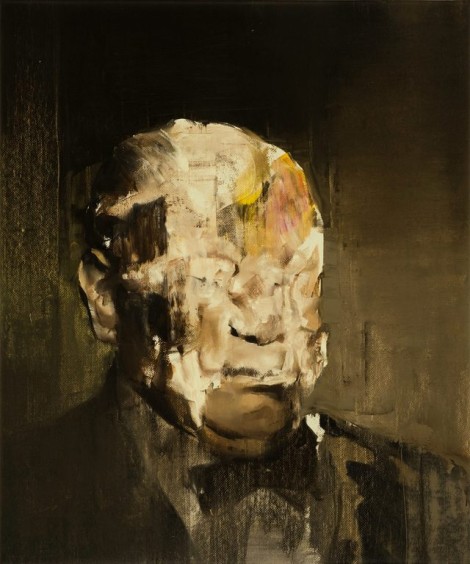
Adrian Ghenie
The ascension of a deeply narcissistic culture has also led to a society of scapegoating. The propaganda of the ownership class is designed to target the least powerful, whose pathologies they cannot afford to disguise or erase. The crimes of the wealthy far outstrip the crimes of the poor. But everyone is a criminal, for the societal context, always in all times irrational to some degree, is now acutely irrational and exacerbating this is the market model for behavioral normalcy. The rich are not in prison. I recently had someone close to me say “I am becoming so quiet”. He longer speaks to even people close to him. Or not as much. Beckett may have prophetically grasped the impulse toward silence that is the result of a culture of such massive contradictions, such massive alienation. Capitalism has created post modernity. Rob Weatherill correctly writes: “Capitalism in its third form, its most cannibalistic form — that eats tradition, eats referents, brings about ecstatic randomness, dazzling dispersions of everything that former generations once believed in.” The narcissism of the rhetoric of empowerment, lifestyle choices, and freedom thinly masks the deeper feelings of inadequacy, guilt, and irrelevancy. Social media is a mirror of all this, a non-place for non-people arguing in exaggerated emotional hysteria about often important issues, but whose arguing is driven by psychological deformation. As Terry Eagleton put it, the outside is colonized in advance. There is no outside. One cannot step outside the matrix. The feeling of having lost control, an adolescent fantasy in earlier times, now permeates adult society. The new childish social critic is finding popularity because the childish adult identifies.
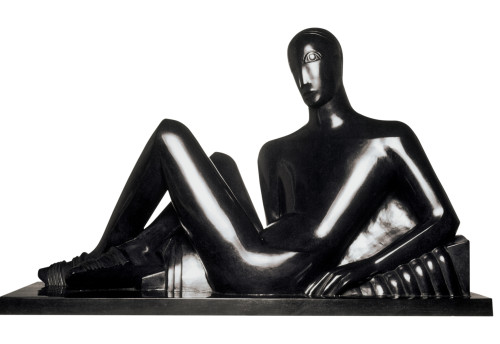
Gustave Miklos
“The we is seriously ill.”
Bernard Stiegler
Stiegler, in his idiosyncratic way, is saying much the same thing as Weatherill, and others. That a life led under Capital is now blocking individuation. In other words, the first step toward collective sharing and unity, solidarity, in the advanced West, is now stifled. As he writes…“The individual ill-being resulting from this state of affairs manifests itself in somatizations, neuroses, and obsessional behaviors of compensation or avoidance, or by various rationalizing logorrheas which may be imitative or reactive.” Image technology, as it is applied in this market model of existence, has now…as Stiegler says, “eradicated the very possibility of *seeing* images.”I have suggested (and a hundred others) before that the various technologically executed interruptions in early childhood development have resulted in strange dis-unities and fragmentation of the self, of the image of the self. It has returned society to a level of a ruthless punishing primitive super-ego. A nation of aberrant petty and sadistic children. Stiegler sees the destruction of primordial narcissism. Perhaps. I think certainly there is no question today about the level of conditioning, on just the most banal level of propaganda (I noted a THIRD series on TV now with a female character who is a Mossad agent…and again, she is sexy and better at martial disciplines than all the men around her) which is ever more reactionary, more flaunting of jingoistic cliches. The fascist aesthetic is now a familiar friend.

Delbert Africa, one of MOVE 9, being arrested, 1978.
On a deeper level, there are affects that have accrued over time into secondary effects. There are now other versions of phantom vibration syndrome, and all of it falls, really, under the aegis of acute hyper anxiety. Adorno believed in the potential for artworks to recuperate a Utopian dream, and Stiegler calls the abandonment of politics by the art world and the abandonment of aesthetics by the political world, a catastrophe. The collapse of culture into commodity manipulations, into propaganda and vulgar kitsch has lowered sensitivities across the entire spectrum of experience. One can’t see Nature, can’t see the human face any longer, can’t recognize the human body. Stiegler is right when he describes it as aesthetic conditioning, instead of aesthetic experience. The leaders of industry, the political class, the telecom moguls and the Wall Street reptiles; these people live outside the world as humans know it. Certainly aesthetically speaking, they are creatures with interior deserts in place of souls and feelings. The inner Chernobyl. Look at Hillary Clinton and look at those mad insect eyes. Look at Samantha Power, and one can see the dry brittle career bureaucrat salivating and panting for approval, ready to act as consigliere for her Capo. Look at any of them. Look at photos of America’s cops. You don’t see what you see in Hollywood. You see thugs, you see Gestapo and SAVAK and Kenyan cops putting down the Mau Mau rebellion, because how far is that from WACO or MOVE or Ruby Ridge. Look at the Louisiana DA who kept Albert Woodfox in jail for no reason other than sadistic satisfaction. Look at the New Orleans cops after Katrina, or Ramparts division and CRASH. Or George Bush tittering at the execution of Karla Faye Tucker, or Hillary cackling at the death of Saddam. The ruling class no longer hide their cruelty. They delight in the suffering of others. Its in the open. One must be BLIND not to see it, right?

There is a big cocaine-shaped hole in this article…
That was a wonderful article. Very much correct and much detail. U explained everything better than I ever could. U explained my life perfectly. Sad but true. Thank u.
Can you explain that comment Monica? What shape is cocaine? Bad metaphor. But beyond that… what do you mean?
Cocaine gives the imbiber a grotesque sense of entitlement, utter indifference to right and wrong, and the ludicrous illusion of being so much smarter than one really is.
The extent that cocaine has penetrated into business and professional realms is never admitted – save for a discussion on the ‘irrational exuberance’ of the markets prior to the global financial meltdown;
http://www.theguardian.com/business/shortcuts/2013/apr/15/cocaine-bankers-global-financial-crisis
The influence of cocaine is starkly evident in the moral and ethical abyss overtaking capitalist society.
Otherwise great article – with which I mostly agree… xo
I’ve always read Nixon’s behavior as more driven by meth than alcohol. And Wall Street was and no doubt still is, an industrial level consumer of coke. Hollywood directors were (one I think of, now dead, was coked up throughout his entire life on location — while his wife made sanctimonious anti drug docu style TV magazine spots). Its an intriguing idea in a way, to track the various delusions of power according to the narcotic consumed. Opiates tend to diminish notions of grandiosity, interestingly.